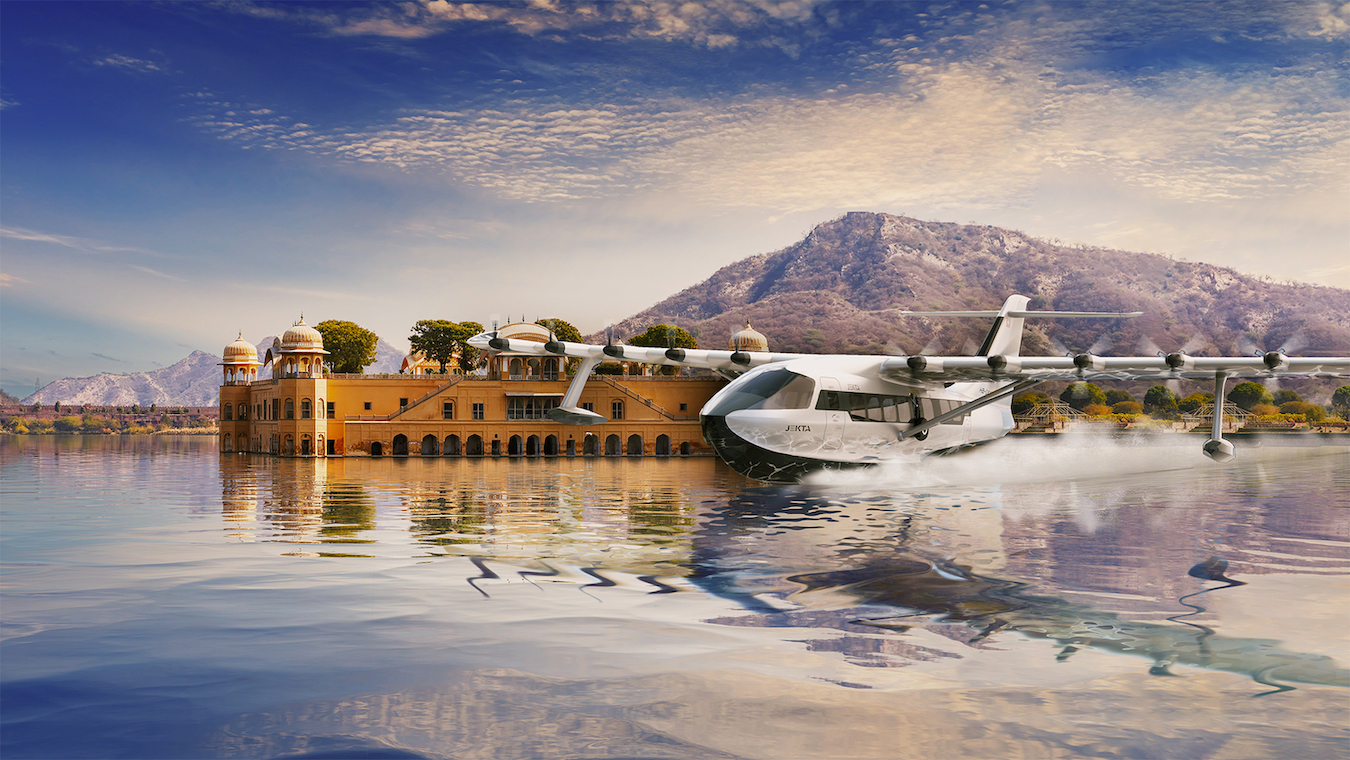Jekta Secures 50-Strong Order for Electric Regional Amphibious Seaplane

Switzerland-based electric amphibious aircraft manufacturer, Jekta, has signed an order with Indian seaplane operator Maritime Energy Heli Air Services Pvt. Ltd. (MEHAIR) for 50 of its next-generation seaplanes.
The contract is for 10 firm orders, with options for 40 more of the PHA-ZE 100 amphibious flying boats. MEHAIR will be the first customer to receive the aircraft in Asia, with initial deliveries starting in 2029.
It is expected that the first 10 aircraft will be delivered in baseline configuration for 19 passengers to support regional connectivity.
MEHAIR has been operating seaplanes since 2011, and this order is part of the airline’s efforts to upgrade its fleet with a sustainable option.
Siddharth Verma, Director of MEHAIR, expressed the company’s desire to be one of the first to operate zero-emissions aircraft, to support regional flights between land and water.
As one of the fastest-growing aviation sectors in the world, with its large expanse of coastline, India is also a hugely untapped geographical area to explore the potential for electric seaplanes.
“The PHA-ZE 100 checks all the boxes for meeting this amphibious potential, and we are confident that the affordable airframe will transform the way India travels,” said Verma.
MEHAIR already operates seaplane services supporting air travel between cities and destinations virtually inaccessible by land infrastructure. The Indian government has already defined multiple water routes and is launching 100 seaplane routes.
“MEHAIR’s proposed operations and future vision exemplify the potential of our airframe to align with the needs of a growing population seeking to travel regionally, whether from water or land,” added Jekta Switzerland’s Chief Commercial Officer, George Alafinov.
The PHA-ZE 100 amphibious flying boat will be certified to EASA CS-23 and US FAA FAR-23 standards for fixed-wing passenger aircraft. It will be used to serve coastal and island communities and regional routes currently limited by operational costs and to support new low-cost, sustainable services between cities without the need to install expensive land infrastructure.
